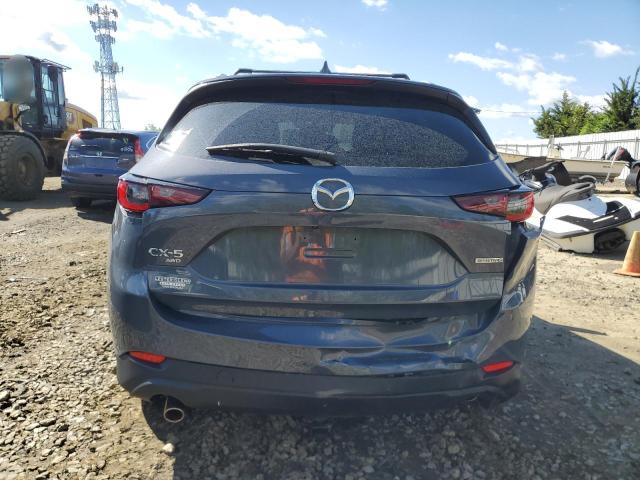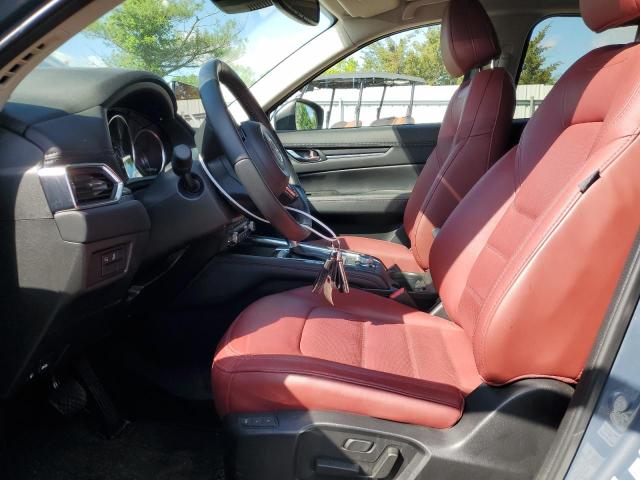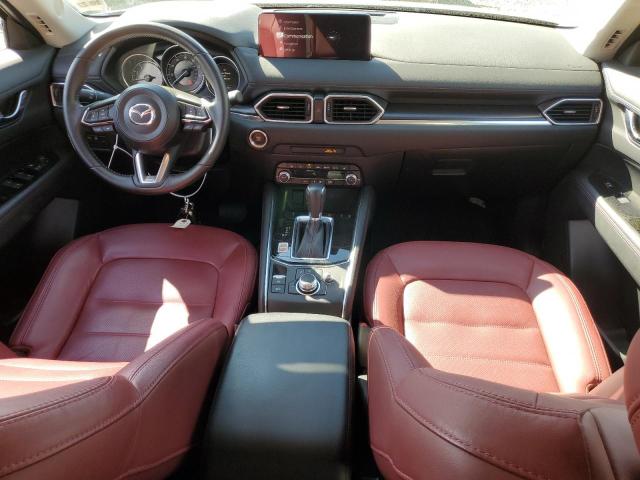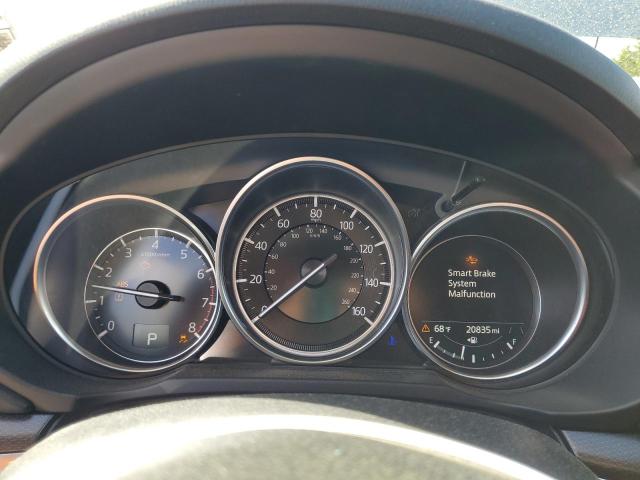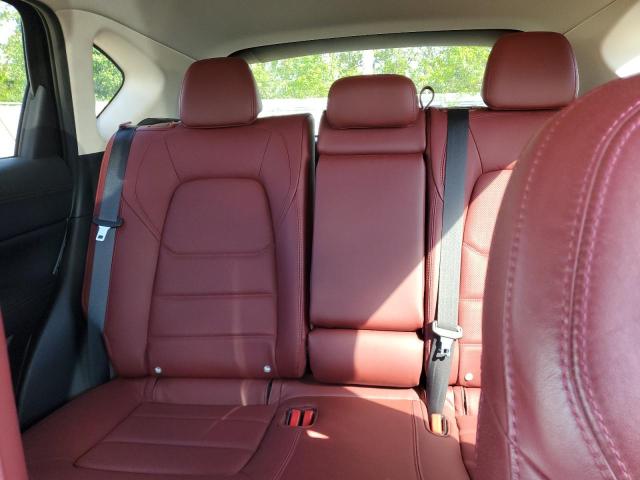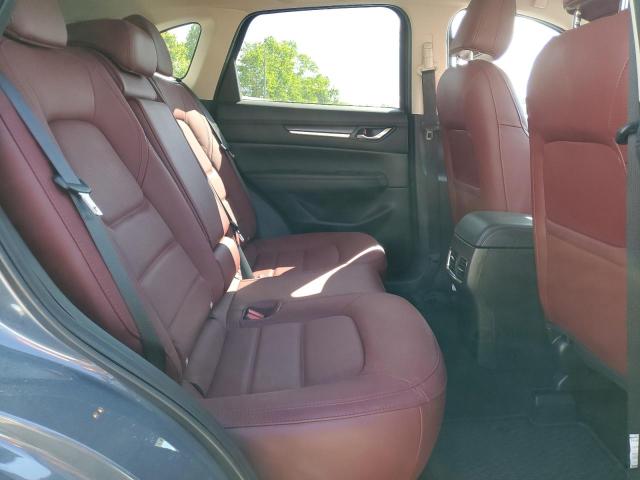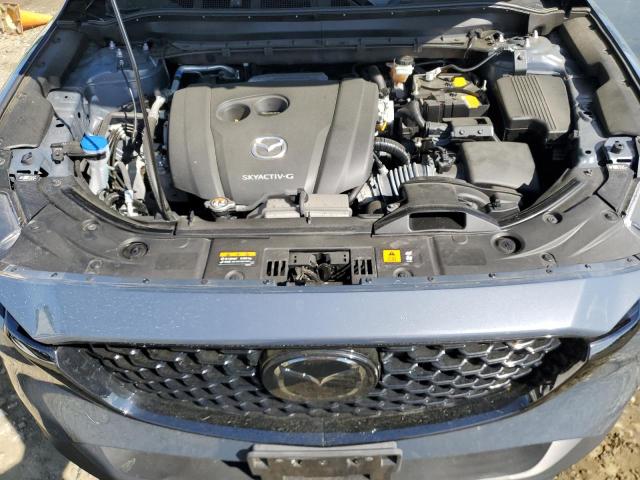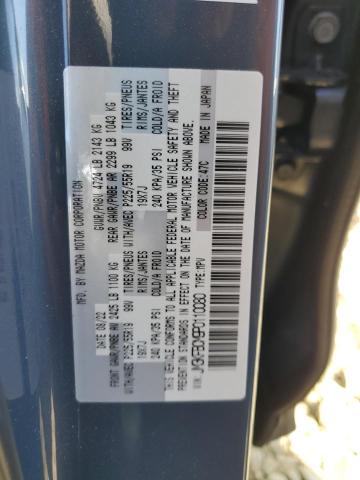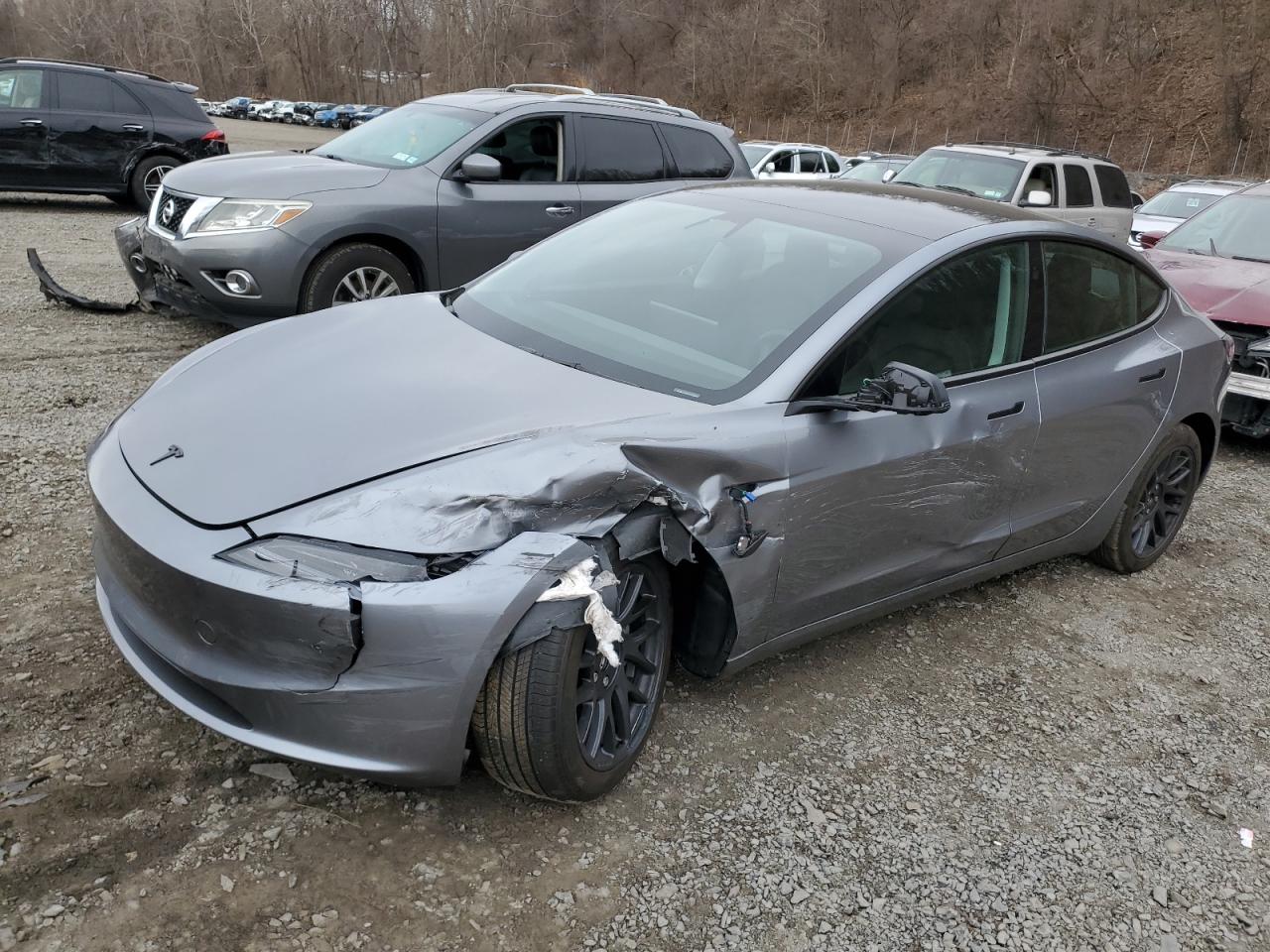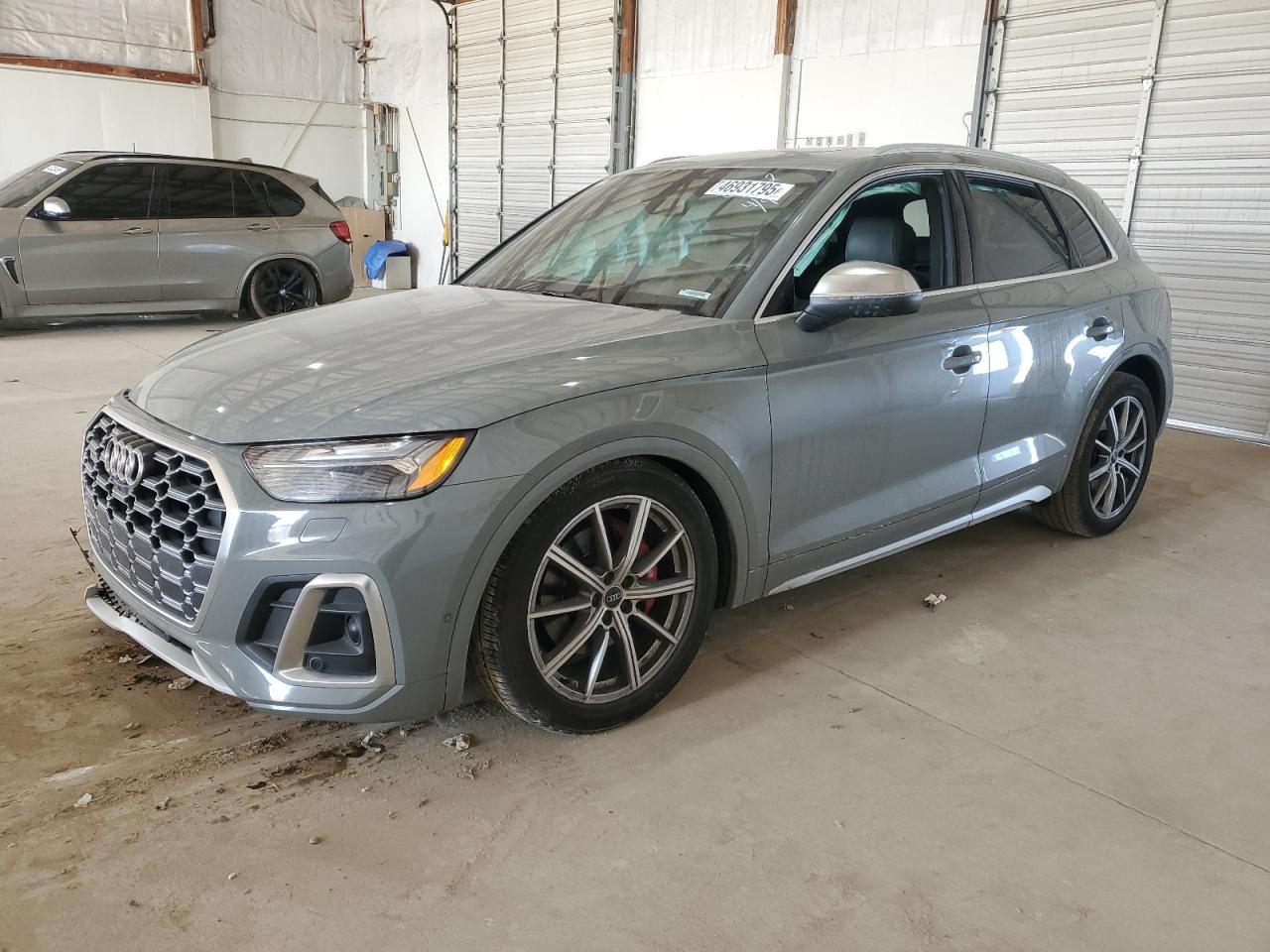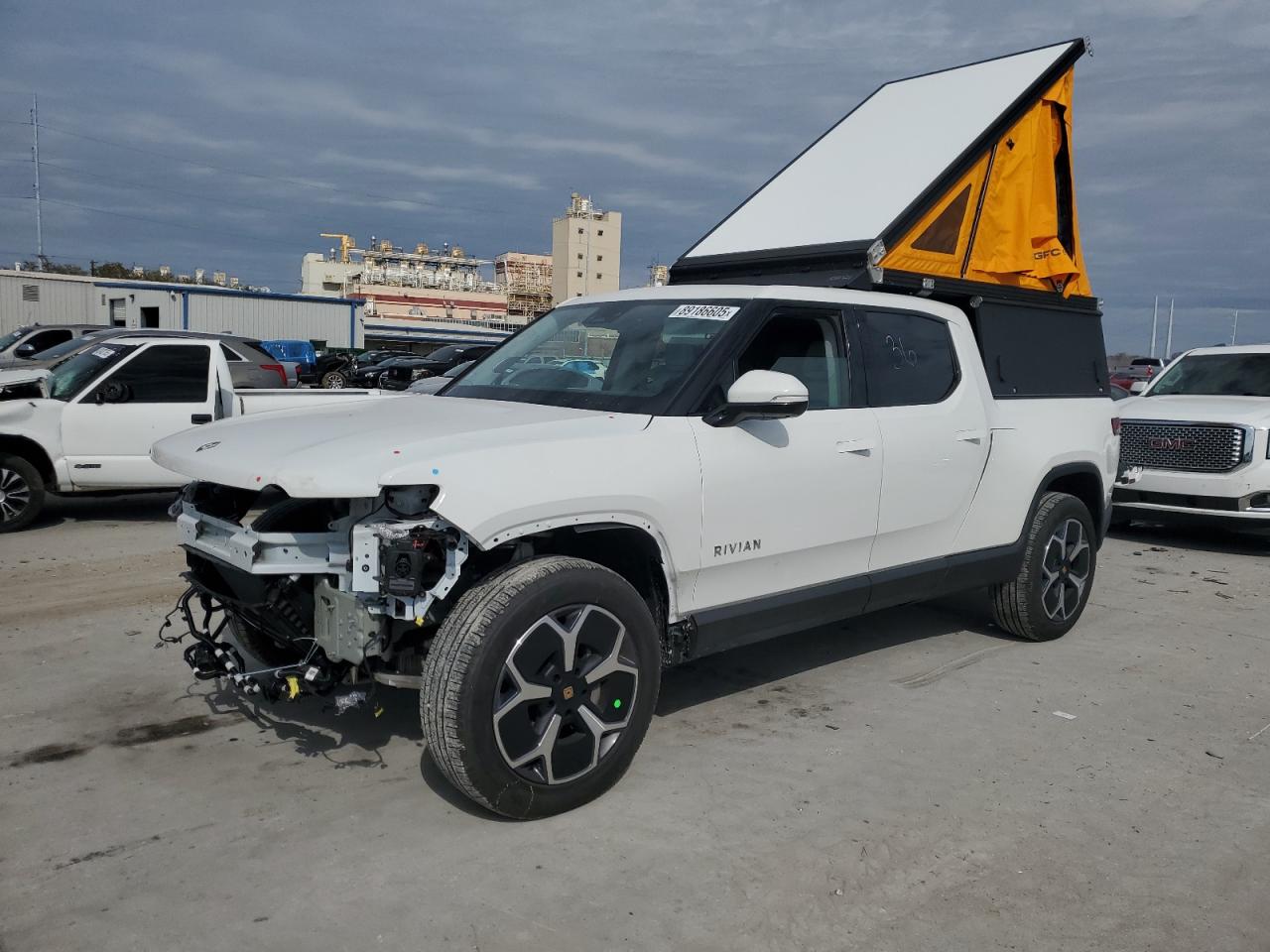2023 MAZDA CX-5 | JM3KFBCM9P0110080
 ❯
❯
Specifications
3
~$39,000
Engine: 2.5L turbocharged I4
Torque: 434 Nm
0–100 km/h: ~6.2 s
In its top-performing 2.5 Turbo AWD form, the Mazda CX-5 delivers 434 Nm of torque and reaches 0–100 km/h in approximately 6.2 seconds, offering one of the most responsive powertrains in the compact SUV class. The turbocharged four-cylinder engine benefits from high-octane fuel for maximum output and is paired with a smooth-shifting 6-speed automatic transmission that favors linear power delivery and throttle precision over brute force. This setup gives the CX-5 confident highway acceleration and athletic low-end punch.
Beyond the numbers, the CX-5’s real sporty character lies in its chassis tuning. Built on Mazda’s SKYACTIV architecture, it employs a well-balanced suspension with a focus on driver involvement. Steering is direct and communicative, and the G-Vectoring Control Plus system subtly adjusts torque during cornering to improve stability and turn-in sharpness. The result is a crossover that feels connected and taut, with body control and feedback that rival some sedans.
The CX-5 stands apart by infusing everyday practicality with the dynamics of a driver’s car. It’s not the quickest SUV on the road, nor the most powerful, but its reflexes, road manners, and quiet sophistication give it a unique identity. In a segment often dominated by softness or tech gimmicks, Mazda preserves the analog joy of driving while still delivering comfort and refinement expected from a modern family vehicle.
Body Styles
The Mazda CX-5 is a five-door compact crossover SUV with a sleek, athletic silhouette. It features a long hood, short front overhang, and cab-rearward stance that gives it a sportier posture than most of its rivals. Its KODO design language emphasizes flowing lines and smooth, uncluttered surfaces with subtle sculpting along the doors and rear haunches. The roofline gently tapers toward a slightly angled liftgate, balancing cargo space with coupe-like style. Pronounced wheel arches and slim LED lighting at both ends accentuate its premium appearance and dynamic proportions.
Model Name Meaning (Manufacturer)
The “CX” prefix stands for “Crossover,” denoting Mazda’s SUV and crossover lineup, while the number “5” places the vehicle in the middle of that range—larger than the CX-3/CX-30, smaller than the CX-9/CX-90. Mazda uses these alphanumeric names to clearly position each model in terms of size and hierarchy, with the CX-5 representing the core of the lineup.
Body & Interior Colors and Rims
The CX-5 is offered in a refined color palette anchored by Mazda’s signature Soul Red Crystal Metallic, a deep, layered paint that showcases the curves of the body with exceptional light-play. Other standout hues include Machine Gray, Snowflake White Pearl, Deep Crystal Blue, and Polymetal Gray, each enhanced by a special five-layer painting process. Trim-specific colors like Zircon Sand Metallic were introduced in later model years to diversify the lineup.
Interior themes vary by trim, with Black, Parchment, and Deep Red leather available in top variants. Materials are chosen for tactile quality, with suede-like inserts, genuine layered wood or metal accents, and double-stitched dashboard panels. The driver-centric cockpit layout is minimalist but warm, integrating physical climate controls and a floating 10.25-inch infotainment screen. CX-5 Signature models receive ambient lighting, real wood trim, and Nappa leather upholstery for a near-premium feel.
Wheels range from 17-inch silver alloys on base trims to 19-inch machined-finish wheels with dark metallic inserts on Turbo and Signature trims. The designs are sculpted and elegant, with thin-spoke patterns and contrasting finishes that highlight both luxury and lightness. CX-5's wheels are proportionally large, filling out the arches and reinforcing the vehicle’s sporty stance.
Top Expensive Options
- Turbocharged Engine Package (2.5T AWD): $4,000
- Nappa Leather and Real Wood Interior Trim: $1,600
- 360° View Monitor with Front and Rear Parking Sensors: $1,200
- Bose 10-Speaker Premium Audio System: $1,000
- Active Driving Display (Heads-Up): $900
- Adaptive LED Headlights with Auto Leveling: $800
- Heated and Ventilated Front Seats + Heated Rear Seats: $1,300
- Power Sliding Moonroof with Sunshade: $1,000
- Mazda Radar Cruise Control with Stop & Go: $700
- Wireless Apple CarPlay and Android Auto: $600
vs Competitors
The Mazda CX-5 continues to distinguish itself among rivals like the Toyota RAV4, Honda CR-V, Volkswagen Tiguan, and Subaru Forester by emphasizing driving dynamics and interior craftsmanship. While others focus on utility, fuel economy, or cabin space, the CX-5 targets the buyer who values tactile steering, upscale materials, and premium ambiance. It may not have the largest cargo volume or most aggressive price point, but it outpaces most competitors in refinement, style, and ride quality. Even against newer rivals like the Kia Sportage or Hyundai Tucson, the CX-5 holds its own with timeless design and a driving experience that rewards precision and feel rather than gimmicks.
Fun Fact
The Mazda CX-5 isn't just one of the most popular compact SUVs — it's also a benchmark for design and driving dynamics in its class, thanks to Mazda’s Kodo design philosophy and human-centric engineering. But here’s what most people don’t realize: the CX-5 was the first Mazda to fully adopt the second generation of Kodo styling, marking a shift toward minimalist surfacing inspired by Japanese craftsmanship. Designers intentionally reduced sharp lines and creases, focusing instead on how light flows across the body, giving the car a sense of motion even when standing still.
Even more impressively, the CX-5 debuted with Mazda’s G-Vectoring Control — a subtle but brilliant piece of software that adjusts engine torque to smooth out steering inputs, improving cornering feel and reducing driver fatigue. It’s nearly imperceptible in action, yet it gives the CX-5 an agility and natural responsiveness that rivals with double the horsepower often lack.
And while most competitors rushed toward turbocharging and electrification, Mazda stayed committed to refining the naturally aspirated driving experience, even introducing a diesel-powered CX-5 in North America — a rarity in the segment — just to give buyers an alternative torque-rich option. That makes the CX-5 not just stylish and composed, but also one of the quiet rebels of the crossover world.
Lot Details
Final Bid Mazda CX-5 (2023)
$10,000
$11,834
$14,100
Specifications
3
~$39,000
Torque:
0–100 km/h:
In its top-performing 2.5 Turbo AWD form, the Mazda CX-5 delivers 434 Nm of torque and reaches 0–100 km/h in approximately 6.2 seconds, offering one of the most responsive powertrains in the compact SUV class. The turbocharged four-cylinder engine benefits from high-octane fuel for maximum output and is paired with a smooth-shifting 6-speed automatic transmission that favors linear power delivery and throttle precision over brute force. This setup gives the CX-5 confident highway acceleration and athletic low-end punch.
Beyond the numbers, the CX-5’s real sporty character lies in its chassis tuning. Built on Mazda’s SKYACTIV architecture, it employs a well-balanced suspension with a focus on driver involvement. Steering is direct and communicative, and the G-Vectoring Control Plus system subtly adjusts torque during cornering to improve stability and turn-in sharpness. The result is a crossover that feels connected and taut, with body control and feedback that rival some sedans.
The CX-5 stands apart by infusing everyday practicality with the dynamics of a driver’s car. It’s not the quickest SUV on the road, nor the most powerful, but its reflexes, road manners, and quiet sophistication give it a unique identity. In a segment often dominated by softness or tech gimmicks, Mazda preserves the analog joy of driving while still delivering comfort and refinement expected from a modern family vehicle.
Body Styles
The Mazda CX-5 is a five-door compact crossover SUV with a sleek, athletic silhouette. It features a long hood, short front overhang, and cab-rearward stance that gives it a sportier posture than most of its rivals. Its KODO design language emphasizes flowing lines and smooth, uncluttered surfaces with subtle sculpting along the doors and rear haunches. The roofline gently tapers toward a slightly angled liftgate, balancing cargo space with coupe-like style. Pronounced wheel arches and slim LED lighting at both ends accentuate its premium appearance and dynamic proportions.
Model Name Meaning (Manufacturer)
The “CX” prefix stands for “Crossover,” denoting Mazda’s SUV and crossover lineup, while the number “5” places the vehicle in the middle of that range—larger than the CX-3/CX-30, smaller than the CX-9/CX-90. Mazda uses these alphanumeric names to clearly position each model in terms of size and hierarchy, with the CX-5 representing the core of the lineup.
Body & Interior Colors and Rims
The CX-5 is offered in a refined color palette anchored by Mazda’s signature Soul Red Crystal Metallic, a deep, layered paint that showcases the curves of the body with exceptional light-play. Other standout hues include Machine Gray, Snowflake White Pearl, Deep Crystal Blue, and Polymetal Gray, each enhanced by a special five-layer painting process. Trim-specific colors like Zircon Sand Metallic were introduced in later model years to diversify the lineup.
Interior themes vary by trim, with Black, Parchment, and Deep Red leather available in top variants. Materials are chosen for tactile quality, with suede-like inserts, genuine layered wood or metal accents, and double-stitched dashboard panels. The driver-centric cockpit layout is minimalist but warm, integrating physical climate controls and a floating 10.25-inch infotainment screen. CX-5 Signature models receive ambient lighting, real wood trim, and Nappa leather upholstery for a near-premium feel.
Wheels range from 17-inch silver alloys on base trims to 19-inch machined-finish wheels with dark metallic inserts on Turbo and Signature trims. The designs are sculpted and elegant, with thin-spoke patterns and contrasting finishes that highlight both luxury and lightness. CX-5's wheels are proportionally large, filling out the arches and reinforcing the vehicle’s sporty stance.
Top Expensive Options
- Turbocharged Engine Package (2.5T AWD): $4,000
- Nappa Leather and Real Wood Interior Trim: $1,600
- 360° View Monitor with Front and Rear Parking Sensors: $1,200
- Bose 10-Speaker Premium Audio System: $1,000
- Active Driving Display (Heads-Up): $900
- Adaptive LED Headlights with Auto Leveling: $800
- Heated and Ventilated Front Seats + Heated Rear Seats: $1,300
- Power Sliding Moonroof with Sunshade: $1,000
- Mazda Radar Cruise Control with Stop & Go: $700
- Wireless Apple CarPlay and Android Auto: $600
vs Competitors
The Mazda CX-5 continues to distinguish itself among rivals like the Toyota RAV4, Honda CR-V, Volkswagen Tiguan, and Subaru Forester by emphasizing driving dynamics and interior craftsmanship. While others focus on utility, fuel economy, or cabin space, the CX-5 targets the buyer who values tactile steering, upscale materials, and premium ambiance. It may not have the largest cargo volume or most aggressive price point, but it outpaces most competitors in refinement, style, and ride quality. Even against newer rivals like the Kia Sportage or Hyundai Tucson, the CX-5 holds its own with timeless design and a driving experience that rewards precision and feel rather than gimmicks.
Fun Fact
The Mazda CX-5 isn't just one of the most popular compact SUVs — it's also a benchmark for design and driving dynamics in its class, thanks to Mazda’s Kodo design philosophy and human-centric engineering. But here’s what most people don’t realize: the CX-5 was the first Mazda to fully adopt the second generation of Kodo styling, marking a shift toward minimalist surfacing inspired by Japanese craftsmanship. Designers intentionally reduced sharp lines and creases, focusing instead on how light flows across the body, giving the car a sense of motion even when standing still.
Even more impressively, the CX-5 debuted with Mazda’s G-Vectoring Control — a subtle but brilliant piece of software that adjusts engine torque to smooth out steering inputs, improving cornering feel and reducing driver fatigue. It’s nearly imperceptible in action, yet it gives the CX-5 an agility and natural responsiveness that rivals with double the horsepower often lack.
And while most competitors rushed toward turbocharging and electrification, Mazda stayed committed to refining the naturally aspirated driving experience, even introducing a diesel-powered CX-5 in North America — a rarity in the segment — just to give buyers an alternative torque-rich option. That makes the CX-5 not just stylish and composed, but also one of the quiet rebels of the crossover world.






